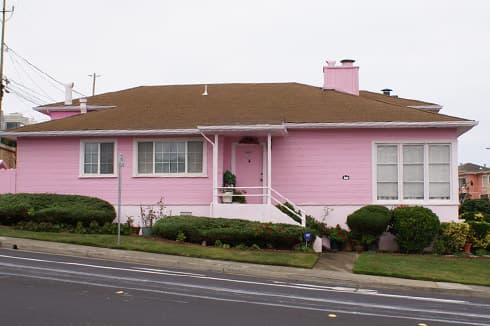About Fixed-Rate Mortgages
- Monthly payments on fixed-rate mortgages remain constant.
- In exchange for the security of a fixed-rate, you are likely to pay more that you would for an adjustable-rate mortgage.
- A fixed-rate mortgage is the most common form of home loan.
The Pros and Cons of a Fixed-Rate Mortgage
What is a fixed-rate mortgage?
Fixed-rate mortgages are the most common type of mortgage used by Americans. A fixed-rate mortgage involves borrowing a sum of money secured by the value of your home and then paying it back with equal monthly payments over the 'term' of the loan, which can range from 10 to 40 years. Fifteen- and 30-year mortgages are the most common types of fixed-rate home loans in the market.
How does a fixed-rate home loan work?
Fixed-rate mortgages are straightforward: based on an initial interest rate, a monthly payment is calculated such that by the end of the term the amount owed to the lender is zero. An identical payment is made each month. Each payment consists of an interest payment and a repayment of a portion of the remaining loan balance. As the loan balance goes down a little each month, the proportion of the fixed payment that goes to interest declines, and the proportion going to loan repayment increases. You can see this in the following chart:
Thus, your mortgage balance declines slowly at first, but shrinks increasingly rapidly over time.
What are the advantages of a fixed-rate mortgage?
A fixed-rate mortgage provides the security of knowing what your monthly payments are going to be for the whole term of the mortgage, even if the country's interest rates rise over time.
In addition, as the most common type of mortgage available, rates remain very competitive and, so long as you qualify, you will always be able to find very competitive mortgage refinance rates and home purchase loan rates.
What are the disadvantages of a fixed-rate mortgage?
You pay for this security, however, because the mortgage rate and monthly payments are higher than for the more risky adjustable-rate mortgages (ARMs).
If rates fall, you also won't enjoy the benefit of falling mortgage rates and lower payments as do the holders of ARMs. But not to worry — it may be a good time to refinance!
15 years or 30 years?
If your #1 priority is to pay the least interest over time for your loan and to be debt free as quickly as possible, a 15-year fixed mortgage can make great sense. These loans typically have significantly lower interest rates than 30-year loans and, of course, are paid off in half the time. But these benefits are far from painless — the monthly payment on a 15-year fixed loan can be a lot larger.
If your priority is a manageable monthly payment while maintaining the security of a fixed rate, a 30-year fixed-rate mortgage is a great choice. You will pay more over time and take 30 years to get your home loan paid off, but you will have a manageable payment and peace of mind.
What do I do if rates fall?
If rates fall, you are also potentially left paying more for your mortgage than you need to. Fortunately, if rates fall far enough, it is straightforward to refinance. If you have a loan you are considering refinancing, check out our 'Should I Refinance' mortgage calculator to see whether now is a good time.
9 Comments
Still, there is no one-sized-fits-all mortgage. From what you describe, it is wise to consider an ARM. Look at how high your mortgage can adjust, if your plans to move take longer than you currently plan for them to take.
